6 ways to make your home safer for seniors and grandkids
Easy modifications that make the home more accessible for all ages
Products are chosen independently by our editors. Purchases made through our links may earn us a commission.
The great majority of seniors would prefer to spend their retirement years at home. But most homes aren't very accessible to those with low vision, mobility limitations, or cognitive decline, and these are common hurdles to overcome as we age.
Many of the challenges of aging in place can be easily addressed by incorporating universal design elements, say experts. Those elements make buildings and environments accessible to people regardless of disability or age. The added bonus? Updating the home to counter limitations also makes the spaces of retirees much more user-friendly for younger grandchildren.
“We have to think of it like the low ends of a bell curve,” says Louis Tenenbaum, chairman-founder of the HomesRenewed Coalition. “Those in their earlier years at the beginning of the curve have less ability to function independently, as do those in their latest years at the end—but there are ways to modify homes so that even those at their most physically able at the highpoint benefit.”
1. Swap doorknobs for levers
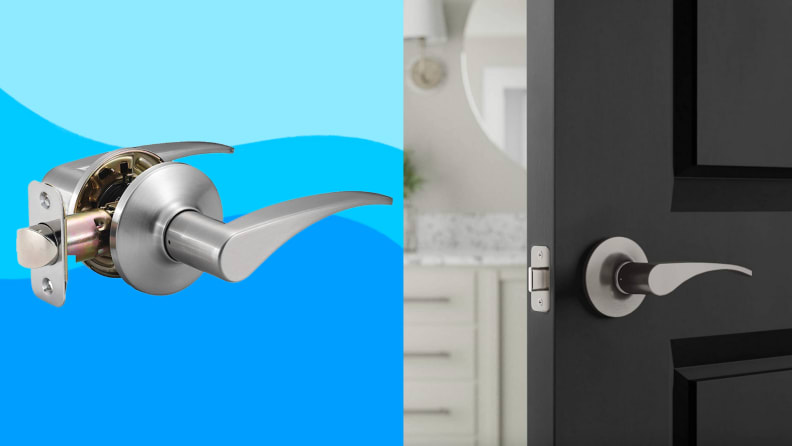
These Amazon Basics door levers are easy to install and great for those both left and right-handed.
Danise Levine, a Certified Aging in Place architect, suggests changing out door knobs with levers as “one of the easiest and most inexpensive modifications a homeowner can make.” Levine, who also leads the home modification program at the University at Buffalo’s Inclusive Design and Environmental Access Center, says that knobs can be difficult for seniors with arthritis—and those of all ages “with a lack of hand strength or dexterity.”
Get the Amazon Basics Victory Door Lever at Amazon for $16.57
2. Consider smart light switches
Light switches are another easy and inexpensive way to modify a home for those with limited grip strength or kids not great with their pincer fingers. Tenenbaum says rocker switches are much easier to maneuver—and typically cost less than $10 for the options without the bells and whistles. For others seeking more frills, smart light switches incorporate universal design elements while also providing hands-free voice control using modern conveniences like smart speakers.
And, “you can’t forget about The Clapper— it’s still out there,” says David Karas, a certified aging-in-place contractor based in cape cod. There's even a cool Star Wars-themed Clapper, which is sure to score come points with the grandkids.
Get the Star Wars Talking Darth Vader Clapper at Amazon for $26.99
3. Watch out for thresholds
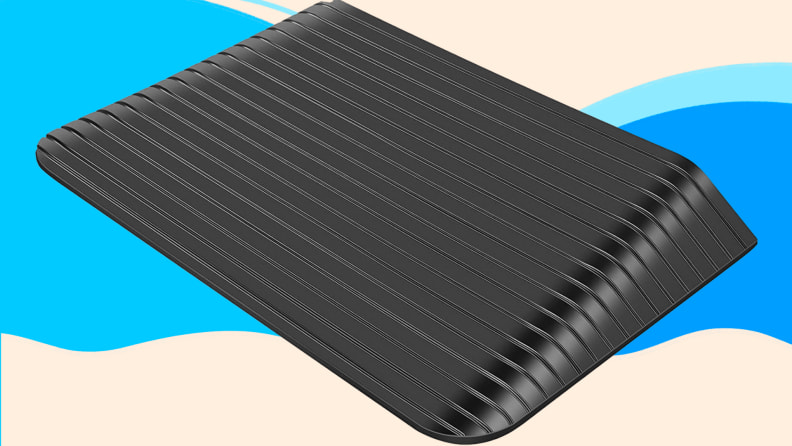
Be confident in every step you take with this rubber curb ramp from Dwale.
Installing low-step entries and thresholds between rooms or into and out of the home are one of Tenenbaum’s top recommendations. Whether it’s “trying to maneuver with a cane, walker, or even a stroller,” those learning to walk or with walking difficulties can easily trip the higher the threshold, he says.
Get the Dwale Curb Ramp Rubber Threshold at Amazon for $63.35
4. Create contrast around stairs
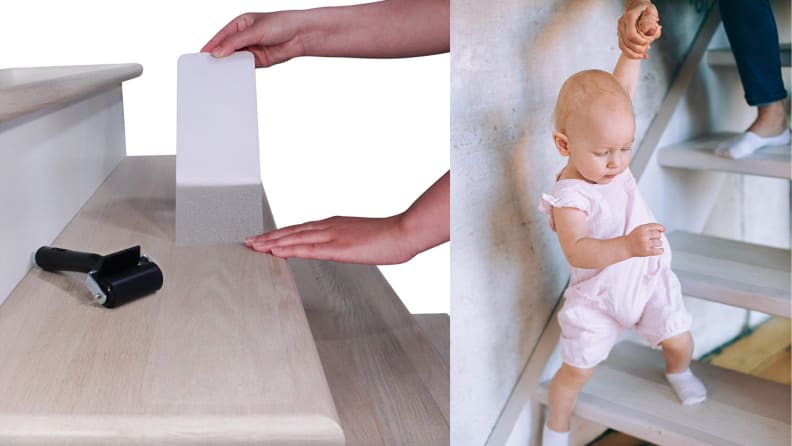
Parents will appreciate the peace of mind that these non-slip stair treads bring.
There are also some visual aids for navigating flights of stairs that aid mobility for those just learning how to climb stairs, and others with diminished capacity. Levine prefers high-contrast, colored markings or visibility strips on the leading edges of stairs.
“The visual contrast makes it easier for people with low vision or vision impairments to distinguish the edge of stair treads and reduces the chance of serious injury,” she says. “It also provides a level of safety on stairs that are located in dimly lit spaces.” Her other pro tip includes applying clear non-slip stair tread strips to the surface of wooden stairs to improve surface traction and prevent falls.
Get the Finehous Non-Slip Stair Treads at Amazon for $34.95
5. Install handrails inside and out
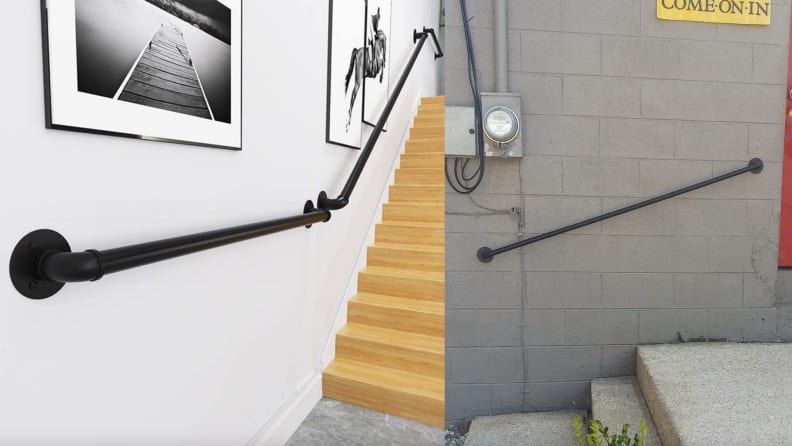
Handrails make the task of traveling up and down stairs less daunting.
Homeowners and all of their loved ones can never have too many options to navigate within, into, and out of the home, say both Levine and Tenenbaum. Stairwells and walkways should be upgraded so that they have handrails on both sides. This is especially helpful if the senior is stronger on one side or prefer one side over the other. Such updates benefit those just learning to walk, or anyone in a wintry climate who may stumble on ice or snow, Tenenbaum says.
Get the Hanone Wall Handrail at Amazon for $43.99
6. Create stability with grab bars
Grab bars in the shower are another one of his go-to updates for all ages. “The bathroom is the most dangerous space when it comes to slipping, no matter how old you are. Grab bars are essential and really well-designed these days—so much so that you can’t necessarily tell they’re grab bars,” Tenenbaum says. He recalls a friend’s grandchild who was just learning to use the shower: “They’re like 3 or 4. And there’s no stigma there—they just saw it as a handy way for them to shower with stability.”
Get the Vive Metal Grab Bar at Amazon for $19.99
7. Move the microwave lower
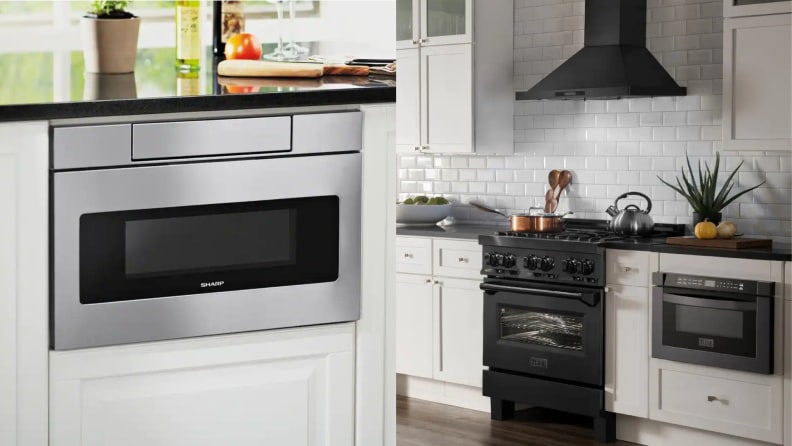
These innovative low microwaves are more accessible and look great.
Architect and interior design consultant Diane Miller of Miller Design in Massachusetts recommends incorporating an under-cabinet microwave or microwave drawer (which sits just below countertops). The installation not only means seniors don’t have to strain upward with heavy, hot food like traditional microwaves installed over stoves, but “grandchildren can also make popcorn or snacks for themselves.”


